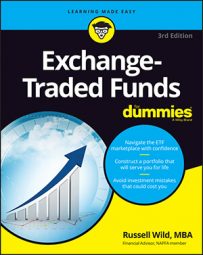Before you go out and invest all your money in ETFs, you may have some more questions. Here are some of the more common questions when it comes to ETFs:
Are ETFs appropriate for individual investors?
You bet they are. Although the name exchange-traded funds sounds highly technical and maybe a little bit scary, ETFs are essentially friendly index mutual funds with a few spicy perks. They are more than appropriate for individual investors.
In fact, given the low expense ratios and high tax efficiency of most ETFs, as well as the ease with which you can use them to construct a diversified portfolio, these babies can be the perfect building blocks for just about any individual investor’s portfolio.
How much money do you need to invest in ETFs?
You can buy one share of any number of ETFs for as low as the price of a share. But since you usually pay a commission to trade (the average trading commission is about $10), buying one $20 share (and thus paying a 50 percent commission) would hardly make good sense.
Starting at about $3,000 perhaps, it may be worth investing in ETFs, but only if you plan to keep that money invested for at least several years. Smaller amounts are best invested in mutual funds (preferably low-cost index mutual funds), money markets, or other instruments that incur no trading costs.
If you wish to invest in an ETF at a brokerage house that doesn’t charge trading commissions for that particular ETF (Vanguard, for example, doesn’t charge you to trade Vanguard ETFs; and Charles Schwab doesn’t charge you to trade Schwab ETFs), then you can buy one share at a time with impunity.
Do ETFs have any disadvantages?
Because most ETFs follow an index, you probably won’t see your ETF (or any of your index mutual funds) winding up number one on Wise Money magazine’s list of Top Funds for the Year. (But you probably won’t find any of your ETFs at the bottom of such a list, either.)
The bigger disadvantage of ETFs — compared with mutual funds — is the cost of trading them, although that cost should be minimal.
Building a well-diversified portfolio of ETFs — stocks, bonds, large cap, small cap, U.S., international — may also seem to have the disadvantage that in any given year, some of your ETFs are going to do poorly. Just remember that next year those particular investments, the ones that look so disgustingly dull (or worse) right now, may be the shiniest things in your portfolio.

